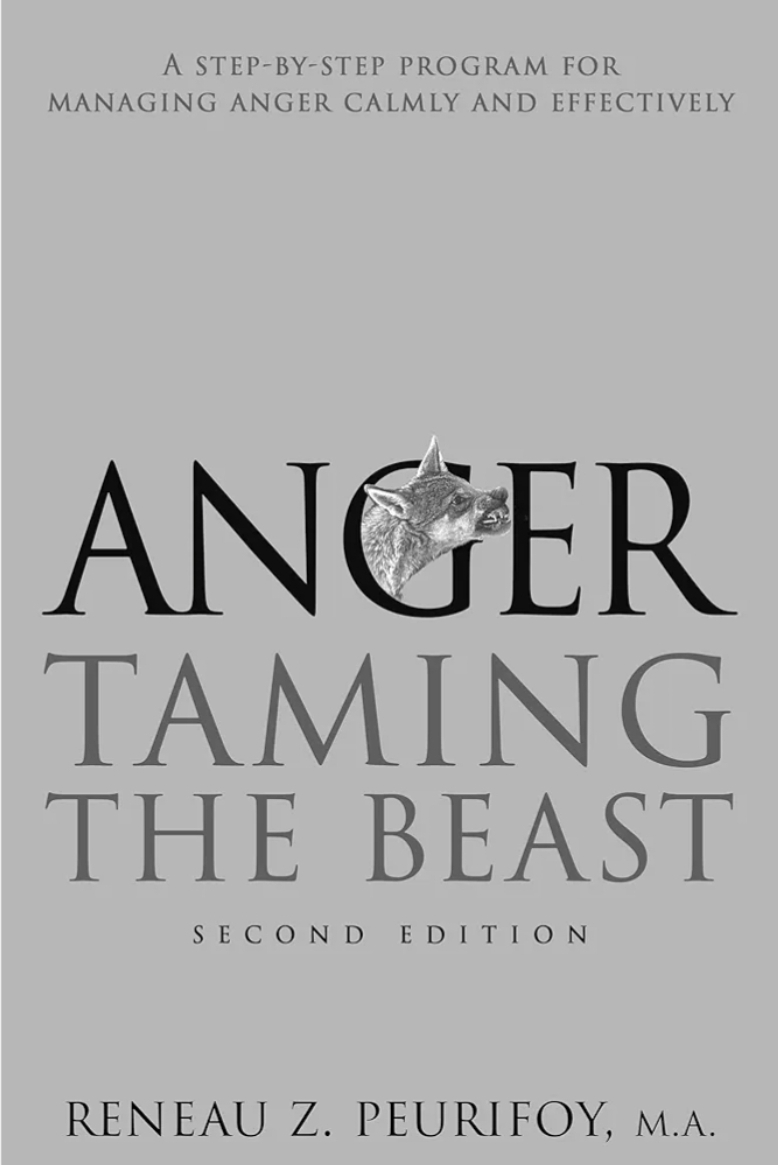“Anger: A Step-By-Step Program for Managing Anger Calmly and Effectively: Taming the Beast” by Reneau Z. Peurifoy – An In-Depth Overview
Reneau Z. Peurifoy’s Anger: A Step-By-Step Program for Managing Anger Calmly and Effectively: Taming the Beast is a practical guide for understanding, managing, and transforming anger into a constructive force. The book combines psychological insights, practical exercises, and real-life examples to provide readers with the tools they need to address anger in a healthy and productive way.
Understanding Anger: The Nature of the Beast
A. What is Anger?
Peurifoy explains anger as a natural emotional response to perceived threats, injustices, or frustrations. He emphasizes that anger itself is not inherently bad but rather a signal that something needs attention.
- Types of Anger:
- Passive Anger: Hidden or suppressed anger, often expressed through sarcasm or avoidance.
- Aggressive Anger: Outbursts, yelling, or physical confrontation.
- Assertive Anger: Healthy expression of anger through calm, direct communication.
- Purpose of Anger:
- Protecting boundaries.
- Signaling injustice or unmet needs.
- Motivating change.
Key Takeaway: Anger is a neutral emotion, but how we express it determines whether it becomes destructive or constructive.
B. Causes of Anger
Peurifoy dives into the psychological, social, and biological roots of anger:
- Biological Factors: Hormones, brain chemistry, and genetics play a role.
- Learned Behavior: Observing anger patterns in parents or society.
- Unmet Needs: Feeling ignored, invalidated, or disrespected.
- Cognitive Distortions: Irrational thinking patterns that fuel anger (e.g., “They did this on purpose to hurt me”).
Key Takeaway: Understanding the root causes of your anger helps address it effectively rather than reacting impulsively.
The Physiology of Anger: What’s Happening Inside?
A. The Fight-or-Flight Response
Anger triggers the body’s fight-or-flight response, releasing adrenaline and cortisol. These hormones prepare the body for action but also reduce the ability to think logically.
- Physical Reactions: Increased heart rate, tense muscles, shallow breathing.
- Emotional Reactions: Overwhelm, irritability, or feeling out of control.
Key Takeaway: Recognizing these physical signs early helps manage anger before it escalates.
B. The Anger Cycle
Peurifoy introduces the Anger Cycle, which includes:
- Trigger: An event or situation sparks anger.
- Interpretation: The brain assigns meaning to the trigger.
- Emotional Reaction: Anger intensifies based on interpretation.
- Physical Reaction: The body prepares for fight or flight.
- Behavioral Reaction: Actions taken in response to anger.
Key Takeaway: Breaking the cycle at any stage can prevent anger from spiraling out of control.
Identifying and Understanding Triggers
A. Recognizing Personal Triggers
Triggers are unique to every individual, often rooted in past experiences, fears, or insecurities.
- Common Triggers:
- Feeling disrespected.
- Unmet expectations.
- Lack of control.
- Perceived injustice.
B. Tracking Triggers Through Journaling
Peurifoy encourages using an Anger Journal to record:
- What triggered the anger?
- How did it feel physically and emotionally?
- How was the anger expressed?
- What could have been done differently?
Key Takeaway: Awareness of triggers allows individuals to anticipate and respond thoughtfully rather than react impulsively.
Cognitive Techniques: Changing Thought Patterns
A. Challenging Irrational Beliefs
Many anger responses are fueled by irrational or exaggerated thoughts (e.g., “Everything always goes wrong for me”). Peurifoy introduces techniques for identifying and challenging these thoughts:
- Reality Testing: “Is this thought accurate?”
- Reframing: Finding a more balanced perspective.
- Self-Talk: Using calming affirmations (e.g., “I can handle this calmly”).
B. Developing Emotional Intelligence
Emotional intelligence helps manage anger by improving:
- Self-awareness: Recognizing anger triggers and physical cues.
- Empathy: Understanding others’ perspectives.
- Self-regulation: Controlling impulses.
Key Takeaway: Changing how you think about a situation changes how you feel and respond to it.
Behavioral Techniques: Practical Strategies
A. Relaxation Techniques
- Deep Breathing: Slowing down your breathing reduces adrenaline.
- Progressive Muscle Relaxation: Tensing and relaxing muscle groups to release tension.
- Visualization: Imagining a peaceful scenario to calm the mind.
B. Time-Out Strategy
- Physically removing yourself from a situation to cool down.
- Setting a time to revisit the issue calmly.
C. Assertive Communication
Learning to express anger calmly and respectfully:
- Use “I” statements (e.g., “I feel upset when…”).
- Focus on behavior, not character.
- Listen actively.
Key Takeaway: Small behavioral changes can prevent anger from escalating into destructive outbursts.
Long-Term Strategies for Anger Management
A. Building Emotional Resilience
- Develop coping mechanisms for stress.
- Cultivate hobbies and self-care routines.
- Build strong social support networks.
B. Forgiveness and Letting Go
Peurifoy emphasizes the importance of forgiveness—not necessarily condoning behavior but releasing anger to free yourself emotionally.
C. Seeking Professional Help
In cases of intense or chronic anger, Peurifoy suggests seeking help from therapists, counselors, or anger management programs.
Key Takeaway: Anger management is an ongoing process requiring self-discipline and patience.
Case Studies and Real-Life Scenarios
Throughout the book, Peurifoy provides real-life examples of individuals who have successfully managed their anger using his techniques. These stories highlight practical applications and inspire readers with relatable experiences.
Final Thoughts and Takeaways
Peurifoy concludes with an encouraging message:
- Anger is a natural emotion, not something to fear or suppress.
- With practice, anyone can learn to manage anger effectively.
- Healthy anger expression leads to better relationships, improved well-being, and a more fulfilling life.
Core Lessons:
- Recognize and understand your triggers.
- Challenge irrational thoughts.
- Use relaxation and assertive communication techniques.
- Seek help if needed.
Conclusion: Why This Book Matters
Anger: A Step-By-Step Program for Managing Anger Calmly and Effectively: Taming the Beast by Reneau Z. Peurifoy is an essential guide for anyone struggling with anger. It offers a balanced approach combining psychology, practical exercises, and emotional intelligence to help readers not only manage anger but also grow emotionally and improve their relationships.
By following Peurifoy’s guidance, readers can learn to tame the beast of anger, transforming it from a destructive force into a powerful tool for personal growth and positive change.







